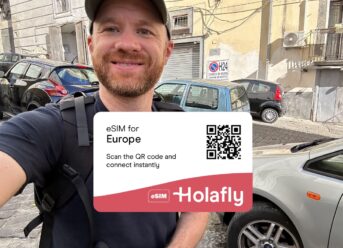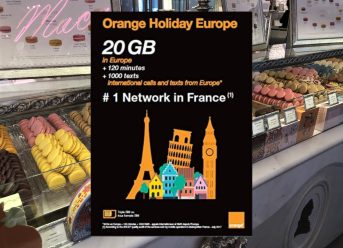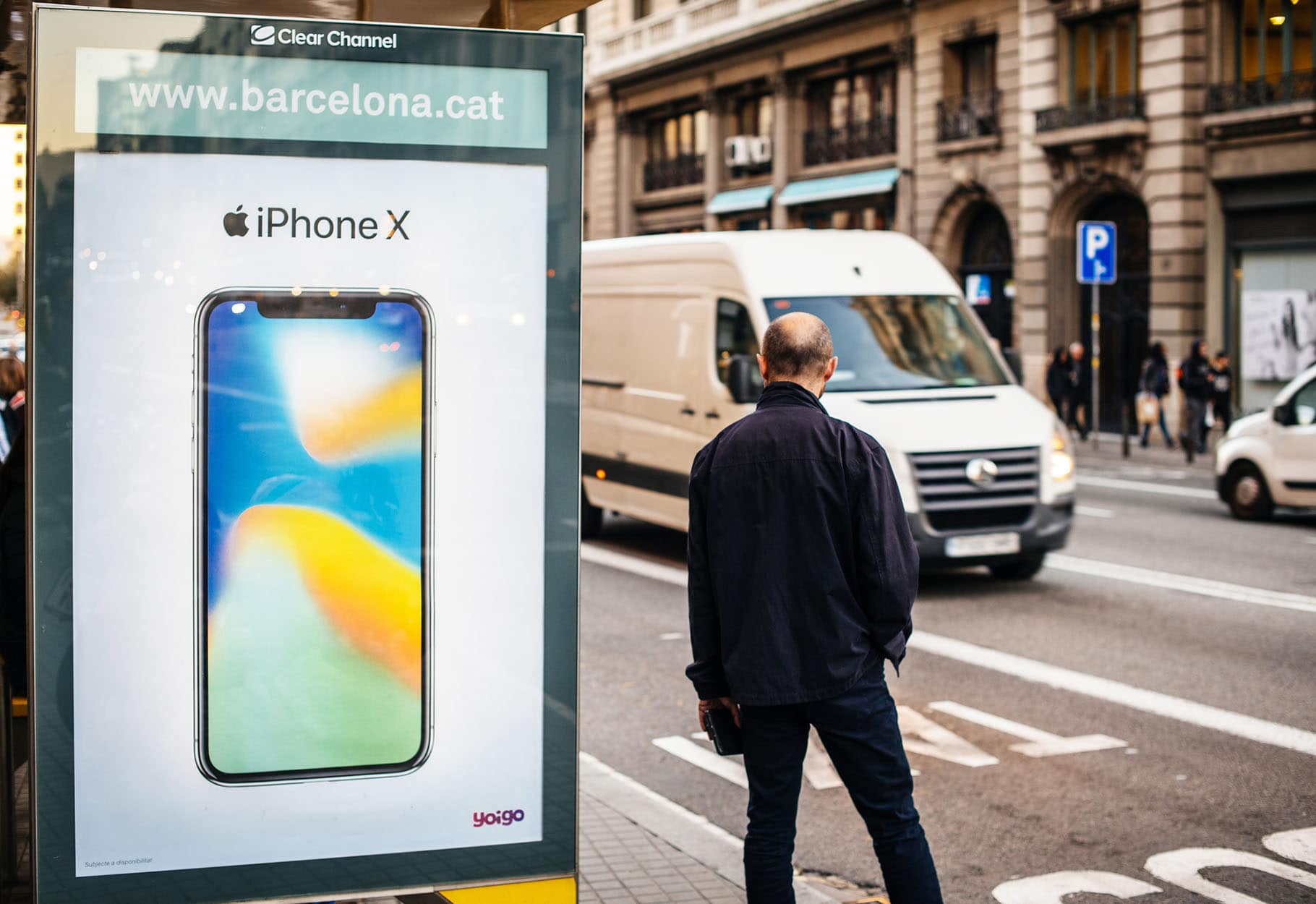
Having a high-speed data plan while traveling Europe is a necessity these days. Unfortunately, using your iPhone or Android smartphone in Europe can be confusing and expensive if you’re not careful.
In this guide, I’ll cover everything you need to know about using smartphones in Europe—including how to buy cheap high-speed data plans, how to buy SIM cards and eSIM plans in Europe, and other strategies for using your smartphone abroad.
Will Your Smartphone Work In Europe?
Yes, virtually all modern smartphones made after 2016 (i.e. iPhone 7 and newer) are compatible with Europe’s mobile infrastructure, so compatibility won’t be an issue.
Furthermore, all the major US carriers have partnerships with local European carriers so your phone will most likely connect to a local European carrier once you arrive in Europe (you may have to toggle on international data roaming in your user settings).
However, many of these international plans offered by US mobile carriers are expensive so you might get hit with costly international data roaming fees if you’re not careful (and the speeds can be slow so you’re not getting much for your money).
Your other option is to buy a prepaid European eSIM/SIM data plan from a third-party mobile data provider. The rates from these providers are half the price and the data speeds are often better.
Both methods have pros and cons (as well as a few quirks) so keep reading as I’ll try to cover all the different options below.
How To Use Your American Mobile Data Plan In Europe

The easiest way to use your American phone in Europe is to add an international data plan to your current mobile service—nearly every major carrier (Verizon, T-Mobile, AT&T, etc.) allows you to do this. Simply go online, and they’ll gladly upgrade your account to work with European carriers with which they have service agreements.
In many cases, your phone will automatically connect without you needing to do anything.
The major downsides are high costs, limited data, and slower data speeds. Expect to pay a minimum of $10/day to use your current carrier’s international data plan.
For example, some of these data plans charge you $15 a day for 100MB of data at 3G or 2G speeds. Calls are still around $1/minute and texts can cost as much as $.25 per message.
I’ve listed out the international data plan details of the biggest US carriers:
NOTE: Many US carriers claim to give you 4G/LTE speeds in Europe with their International Plans but most users experience 3G or even 2G speeds (I can personally attest to this). For reference, even 3G speeds will struggle with Google Maps or even simple web browsing.
Using T-Mobile In Europe
T-Mobile made headlines a few years ago when it started offering free and unlimited international data, text, and cheap international calls with most of its plans. This made T-Mobile a very popular choice for budget travelers.
Customers with Magenta and Magenta MAX phone plans get unlimited texting and data in 210+ countries and up to 5GB of 4G LTE data (unlimited 2G speeds thereafter). 5GB of data is a good amount for web browsing, e-mail, social media, and the occasional use of certain features like GPS/maps. But, if you’re going on a longer trip then you might eat up all your data before your travel is finished.
If you need more data, you can add an International Pass to receive additional high-speed data:
- International Pass: 512MB of high-speed data at up to LTE speeds and unlimited calling, to be used for up to 24 hours, for $5/day.
- 5GB International Pass: 5GB of high-speed data at up to LTE speeds and unlimited calling, to be used for up to 10 days, for $35.
- 15GB International Pass: 15GB of high-speed data at up to LTE speeds and unlimited calling, to be used for up to 30 days, for $50.
- Visit the T-Mobile website for more information.
Using Verizon In Europe
Verizon isn’t great when it comes to international data travelers because their plans are expensive and you don’t get much data.
- TravelPass
- For an extra $10/day you can take your normal Verizon plan and use it in Europe. You do get 4G speed on the first 2GB of data per day but then the speed is throttled down to 2G after that.
- Monthly International Travel Pricing
- Verizon’s monthly international travel plan is an extra $100/month and it gives you a total of 5GB of data for the entire month. After you hit your limit your speeds are throttled down.
- Pay as You Go pricing
- You can also pay as you go but it’s extremely expensive. Data is $2.05/MB and texts cost $.50 each.
- Visit the Verizon website for more information.
Using AT&T In Europe
AT&T is decent when it comes to using their data plans in Europe but it still isn’t great.
- AT&T International Day Pass
- For an extra $10/day you can take your existing AT&T plan and use it in Europe. Data will be drawn from your domestic plan allowance with the same data and speed restrictions so that’s pretty nice if you have a good US plan. There are some other conditions so read up on those.
- AT&T automatically opts you into the Internation Day Pass as soon as your phone tries to access data (many apps connect to data in the background) so make sure you don’t accidentally use any data because you’ll be charged the $10/day.
- AT&T Passport
- The AT&T Passport is a monthly plan that comes in two options — $70/month for 2GB of data or $140/month for 6GB of data.
- Note: They charge a hefty overage of $30/GB so watch your data usage.
- Check out the AT&T website for more information.
How To Buy A Prepaid High-Speed Data Plan For Europe (eSIM and SIM Cards)
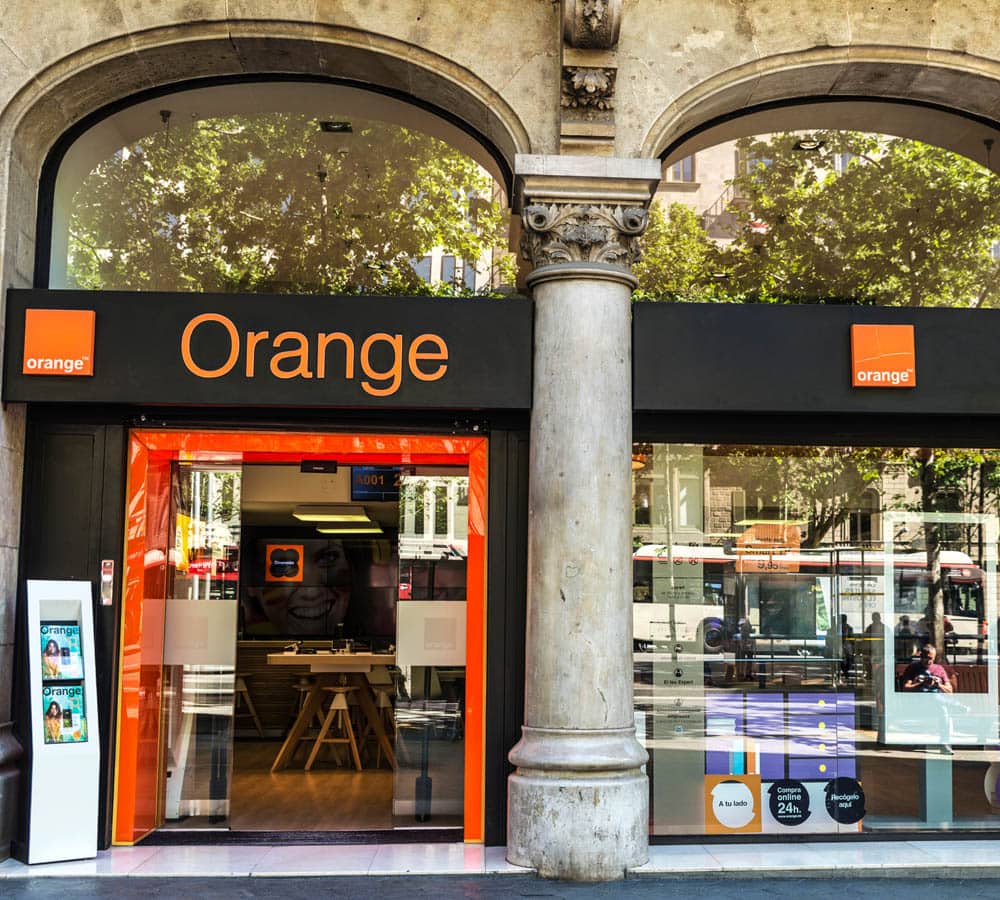
You can also use your smartphone in Europe by replacing your phone’s physical SIM card with a SIM card from a European mobile carrier or by purchasing an eSIM data plan.
UPDATE: Nearly all phones are now eSIM compatible—which is much more convenient than traditional physical SIM cards since you simply download the data service to your phone. I’ve covered eSIM Data Plans more in-depth in my Guide To The Best eSIM Data Plans for Europe.
I recommend buying an eSIM instead of a physical SIM card because with an eSIM plan, you get to keep your original SIM card in your phone and activation is instant. Check out the eSIM data plans from SimOptions and Holafly for popular eSIM plans.
There are dozens of mobile phone carriers in Europe so competition is fierce—which keeps the prices down and the service competitive. That’s why using a European mobile carrier is much cheaper, the data speeds are much faster, and you’ll get much more data allowances compared to US plans.
For example, you can often find prepaid data plans that offer 20GB of high-speed data for €20/month, and the service works in any EU country. Additionally, nearly every plan will also come with talk and text as part of the package.
NOTE: By law, there are no international roaming charges within the European Union so if you buy your SIM card within the EU then that service will work in any other EU country with no extra charges.
The downsides of buying a European SIM card are the hassle of buying the SIM, activating the service, and dealing with any potential tech issues. That said, getting your service set up is usually very straightforward and should only take a few minutes.
NOTE: Installing a new physical SIM card will give you a European phone number so people won’t be able to call your US number until you reinstall your original SIM card (unless you have a phone with two SIM Card slots).
HOWEVER: This isn’t the case if you use an eSIM because eSIMs let you use both your original SIM card and the eSIM at the same time.
How To Unlock Your Smartphone
Many American mobile phone companies use software to “lock” their smartphones to their network so the phone won’t work if you install a SIM card from another company.
However, you can unlock your phone by calling your mobile carrier and asking them to unlock it because you’re going to travel abroad (you might need to visit a store to get it unlocked).
Unlocking your smartphone can be a hassle because some carriers make you jump through hoops and they have different criteria about which customers are “eligible” to unlock their phone. So contact your carrier to see what you need to do—I recommend not waiting until the last minute in case there are issues.
What If Your Mobile Carrier Won’t Unlock Your Smartphone?
Unfortunately, some mobile carriers refuse to unlock phones while they’re still under contract. In this case, I recommend using an old smartphone that you don’t use anymore or using the company’s international data plan.
Old phones make great travel phones since it’s not a huge deal if they get lost/stolen/broken. You can often find people selling factory-unlocked phones or cheap older-model smartphones online that will be perfectly capable of basic things like texting, Google Maps, and light web browsing.
Remember, you can still use your current smartphone in Europe for photos and then hop into a coffee shop to upload stuff via their WiFi.
Buying A SIM Card Before You Travel
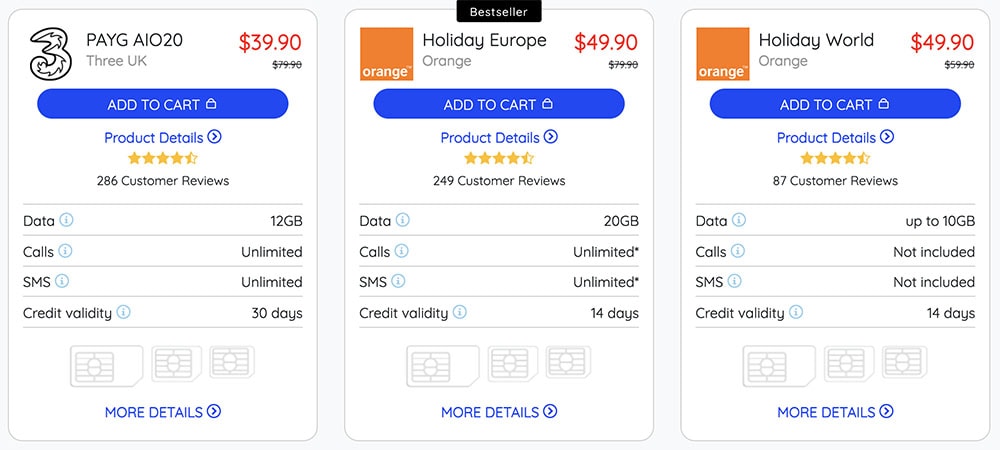
The easiest option is to buy a prepaid European SIM card before you travel and have it mailed to your home address—this way you’re ready to go the second you arrive in Europe. The prices are typically a little higher than buying in Europe but it’s a more convenient option.
UPDATE: If your phone is eSIM compatible, I recommend buying an eSIM instead of a physical SIM card because it’s way more convenient, you get to keep your original SIM card in your phone, and delivery is instant so you don’t have to pay for shipping.
Check out the eSIM data plans at SimOptions and Holafly for popular eSIM plans.
As an added bonus, many of the SIM cards I’ve listed have little/no activation so the service starts the second you install the SIM card. But others might have you register them online when you get the card but it’s usually pretty simple.
I’m a fan of SimOptions because they are authorized resellers of multiple SIM card plans (and eSIM plans) from many of Europe’s largest mobile providers like Orange, Three UK, Bouygues Telecom, and 02.
ORANGE HOLIDAY EUROPE PREPAID SIM CARD
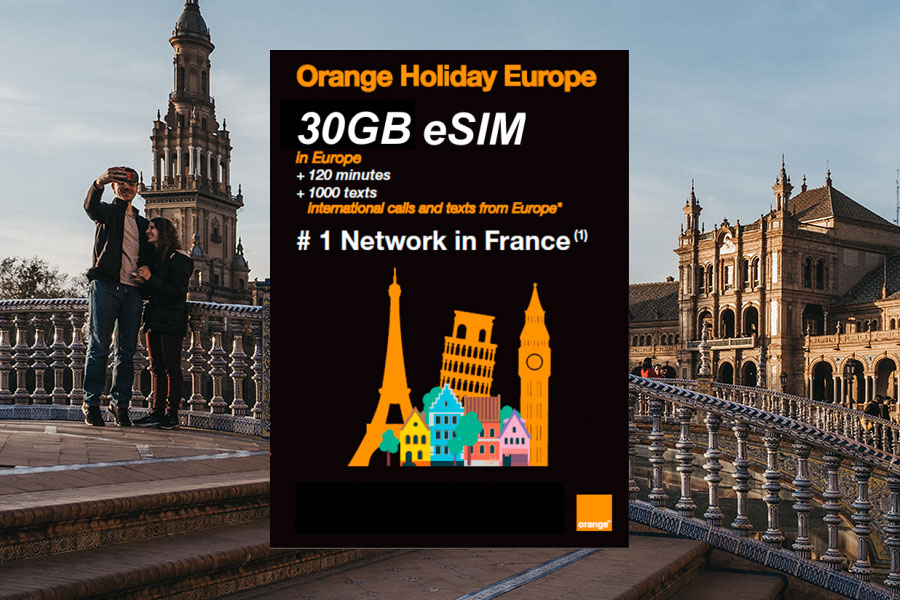
The Orange Holiday Europe Prepaid SIM Card is probably the best all-around option for SIM cards that can be purchased abroad because it offers a lot of data for a good price and includes many worldwide calls and texts.
Additionally, Orange is one of the largest mobile companies in Europe, and it has great coverage throughout most of Europe (which isn’t always the case with smaller European carriers).
Plan Specs:
- PRICE: $50
- DATA: 30GB
- CALLS: Unlimted in Europe and 1200 minutes worldwide
- TEXT: Unlimted in Europe and 1000 worldwide
- CAN BE USED AS A MOBILE HOTSPOT?: Yes
- CREDIT VALID FOR: 14 Days
The Orange Holiday Europe plan is good because it gives you a lot of mobile data for a decent price but the only possible drawback is the 14-day validity period — which doesn’t matter if your trip is less than two weeks. That said, you can buy an extra 10GB of credit after the two weeks are up for around $25.
If you need less data and want to save a little money, check out the $30 Orange Holiday plan that gives you 8GB of data for 14 days.
The Orange Holiday plans are also available as an eSIM—which means you don’t have to wait for delivery or pay for shipping (assuming your phone is eSIM compatible). Check out the eSIM data plans at SimOptions to get the details on both the Orange Holiday Europe eSIM and the Orange Holiday Zen eSIM plans.
Learn more about eSIM data plans and see if your phone accepts eSIM cards in my Guide to Prepaid eSIM Data Plans in Europe.
BOUYGUES TELECOM VACATION PREPAID SIM CARD

The Bouygues Telecom Vacation Prepaid Plan is very similar to the Orange Holiday Zen but the Bouygues plan must be activated in France — so that’s a huge drawback.
- PRICE: $50
- DATA: 20GB
- CALLS: Unlimted in Europe
- TEXT: Unlimted in Europe
- USED AS MOBILE HOTSPOT?: NO
- CREDIT VALID FOR: 30 Days
- Must be activated in France but can be used anywhere in the EU.
Bouygues now offers their Bouygues My European eSIM prepaid data plan to compete with the Orange Holiday Europe eSIM. It comes with 30GB of data and it is valid for 30 days so it’s worth checking out. Visit SimOptions.com to get all the details.
Holafly Unlimited Data eSIM

Holafly is an eSIM startup I’ve also personally used in Europe—the service was great and I got very fast data speeds (read my Holafly eSIM Review to learn more). Unlike other companies, Holafly’s plans give you unlimited data but they might throttle your data if you use excessive data. Holafly’s plans come in set durations of 5 to 90 days so it’s convenient for multiple trip lengths.
Holafly eSIM plans now come with an Austrian phone number that gives you 60 minutes of calls to and from other European phone numbers. It doesn’t come with SMS text messages but you can send iMessage between iPhones or use WhatsApp.
- Prices For Unlimited Data (Check Holafly for details)
- 5 Days: $19
- 10 Days: $34
- 15 Days: $47
- 20 Days: $54
- 30 Days: $64
- 60 Days: $84
- 90 Days: $99
- Service Speed: 5G/4G/LTE
- Calls: Includes an Austrian phone number that comes with 60 minutes of calls to/from European numbers (except Iceland, Norway, the United Kingdom, Switzerland, Ukraine, and Turkey).
- Texts/SMS: None
- Tethering: No
THREE UK PAYG AIO15
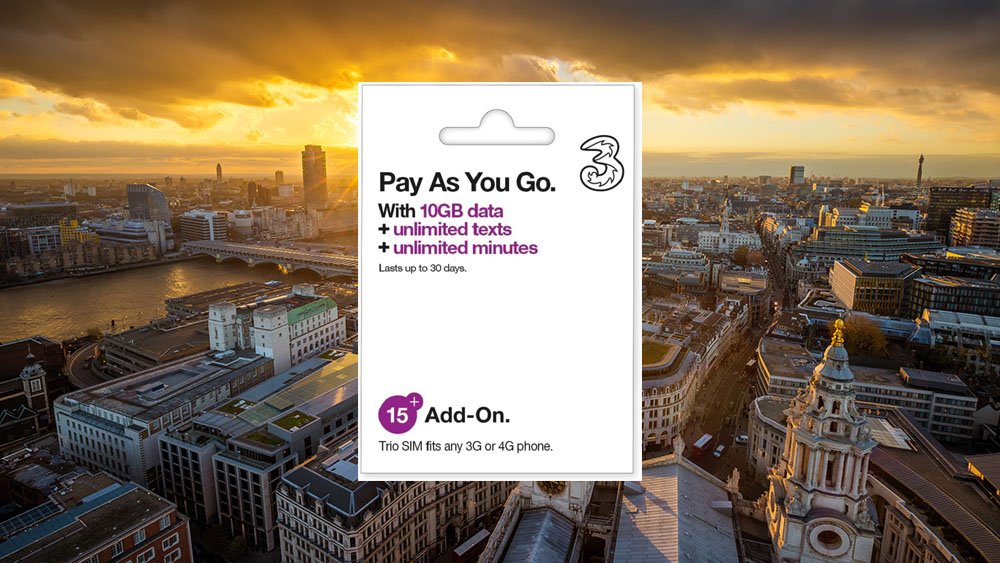
Three UK is another large European mobile carrier and their PAYG AIO15 plan is a good value for people who don’t need the 20GB offered by the Orange Holiday Europe plan. I like how the plan has a validity period of 30 days so it’s good for longer trips.
Plan Specs:
- PRICE: $30
- DATA: 10GB
- CALLS: Unlimted in Europe
- TEXT: Unlimted in Europe
- USED AS A MOBILE HOTSPOT?: No
- CREDIT VALID FOR: 30 Days
Where To Buy A SIM Card in Europe
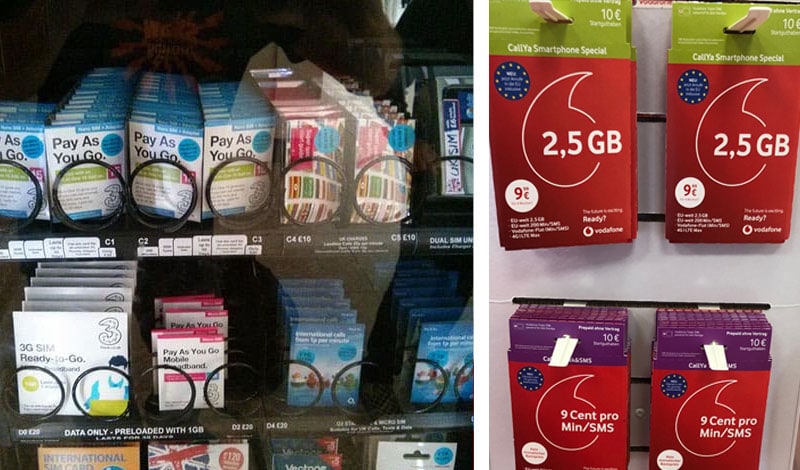
Buying a European SIM card is easy because they’re sold virtually everywhere — including airports, vending machines, grocery stores, and more. If you have an eSIM, you can buy them online from SimOptions and Holafly.
Here are a few of the most popular places you’ll find SIM cards:
- Carrier-Specific Shops: The major mobile carriers will have their own stores where they’ll help get your service set up. Most employees should speak some English but they install SIM cards all day so they’ll be able to set you up without much communication needed.
- Third-Party Phone Shops: Many mobile phone shops sell a range of phone plans from multiple companies. Employees might be able to offer some help getting set up but service probably won’t be as good as carrier-specific shops.
- Newsstands, Tobacco Shops, Vending Machines, etc: You can find SIM cards in multiple smaller shops at airports, train stations, and randomly throughout most cities but don’t expect any customer service.
Types Of Prepaid Mobile Data Plans in Europe
There are dozens of mobile carriers and each will have multiple plans (either pay-as-you-go or bundled) so just pick one that best fits your needs — I recommend sticking with the major carriers since they’re typically the most user-friendly and should give you the best speed/coverage.
Pay-As-You-Go Mobile Data
With Pay-As-You-Go plans, you buy a set amount of credit that you add to your account and then you reload more money onto your account once your credit runs out. Service with pay-as-you-go plans is more expensive but it’s the cheapest option if you use your phone sparingly.
Bundle Mobile Data Plans
A Bundle Mobile plan is the best option for extremely heavy data users since you pay a lot less per gigabyte of data. Most carriers offer multiple bundle plans so just pick the one that fits you best. That said, many Bundle Plans come with a monthly contract so it doesn’t make sense for the average traveler since it’s geared toward residents.
How Much Do Mobile Data Plans Cost in Europe?
Mobile data plan prices in Europe vary widely based on the country, plan options, and various deals at the time—so it’s hard to accurately predict how much you’ll pay. However, here are some example prices so you can have a better idea of how much you’ll potentially pay:
- SFR (French) offers a €20 plan with 25 GB of mobile data that’s good for 30 days or a €10 plan with 10 GB good for 8 days.
- Orange Prepaid Holiday SIM Card (French) costs around €40 and it gives you 20 GB of mobile data good for 14 days (you can add more credit as you go). While it is more expensive, you can have this SIM card shipped to your US address before you leave. Good throughout the EU.
- TIM (Italian) has a tourist-specific plan called Tim Tourist for €20 (+ €10 for the SIM) that includes 15 GB of data in Italy and up to 6 GB in the EU for 30 days.
- Vodafone (Italian) has its Dolce Vita tourist plan for €25/month which includes 30 GB in Italy (15 GB in the EU).
- Orange Holidays Spain (Spain) Orange’s Holidays Spain is their tourist plan that is €20/month for 30 GB of data in Spain/EU.
How To Install A SIM Card And Activate Your Service
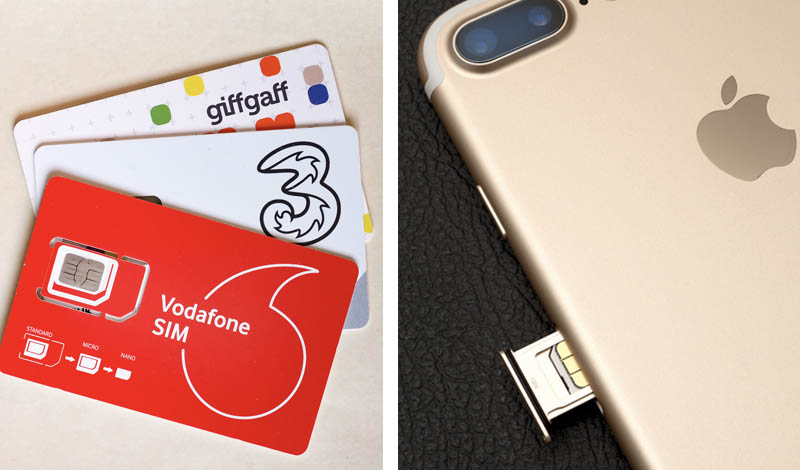
Installing a SIM card is simple and only takes a minute — all you need to do is take the old SIM out and put the new one in.
- Installing SIM Card In An iPhone: On an iPhone, the SIM card is located in a little slot on the side of the phone. You pop it out with a SIM card tool or a paper clip. Simply take the old SIM out and put the new one in (put your old SIM card in a safe place).
- Installing SIM Card In An Android Phone: Android phones typically have the SIM card located where the battery is located or in a slot like the iPhone. Simply take the old SIM card out and put the new one in (put your old SIM card in a safe place).
Typically, the phone will recognize the new SIM card, and it should automatically connect to the new carrier’s network (it may prompt you to restart the phone after installing).
Your SIM card will come with instructions in English on how to finish setting up your service. Typically, you can either add credit to “pay as you go” or you can buy a pre-paid monthly plan that gives you a bundle of services (data, talk, text, etc.).
NOTE: Some countries require that you register your SIM card so you may have to show your passport and/or list a local address (you can often use your hotel or rental apartment address).
How To Top Up Your SIM Card
Once you run out of credit you’ll need to “top up” your SIM card to add more credit to your account. Most companies let you top up via their website or you can buy credit at newsstands, grocery stores, etc. Typically you’re given a code that you enter into your phone and that is how the credit is added.
Possible Problems Using A European SIM Card
As mentioned previously, some people have problems activating their European SIM cards/mobile service. Here are a few of the most common issues:
Needing An Address/Passport: Some countries require that all SIM cards must be registered and that usually means needing to give them a local address when you activate the service. Often you can just put in any address (like a hotel, etc.) but some places require you to show your passport as well.
Technical Trouble: For the best service, it’s recommended to buy your SIM directly from a mobile company’s physical store. This way they’ll be able to get everything activated right there. Some cheaper companies make you phone them to activate and they might not have any English speakers. The store might not have English speakers but it’s much easier to get stuff done in person.
Getting The Correct Size SIM Card: SIM cards come in different physical sizes so make sure you get the size that matches your phone’s specs.
Stick With Major Carriers: Europe has a ton of smaller mobile carriers but the major players usually have the best service and speeds. You might end up paying a little more but it’s probably worth the cost to avoid issues.
More Tips On Using Your Mobile Phone In Europe
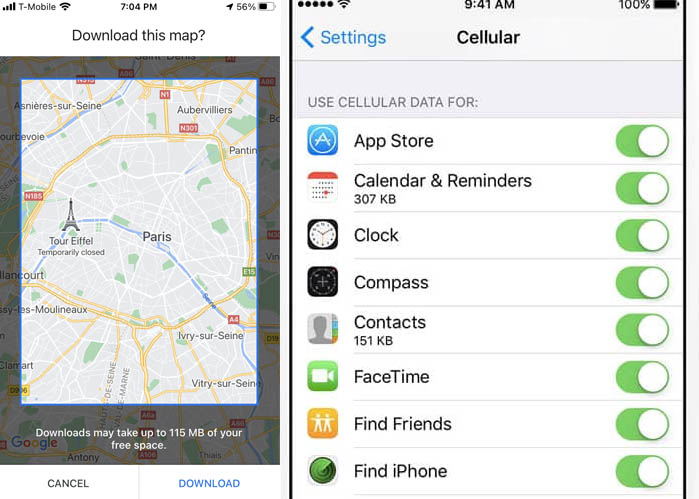
Buy A Portable Battery Charger
Using apps like Google Maps and taking photos kills your phone battery so a portable battery is a must-have. I use Anker PowerCore 10000 because it’s tiny and affordable but there are multiple options.
Using Free WiFi While Traveling Europe
I think people overestimate how easy it is to find free wifi in Europe. Yes, free wifi is becoming more prevalent throughout Europe. However, it’s hard to rely exclusively on free wifi since it can be a pain to find a free network when you need it.
The best places to find free wifi are McDonald’s, Starbucks, cafés, coffee shops, and hostels/hotels — but getting connected is rarely super convenient, reliable, or fast.
Relying on free wifi fails when it comes to day-to-day stuff like using Google Maps, looking up restaurant reviews via Google/Trip Advisor/Yelp, using random apps, using Uber, booking e-tickets, using email, etc. because these are things you typically do spur of the moment. That’s why I prefer to have the option of having mobile data because having to seek out a coffee shop every time I want to use the internet gets tiring very quickly.
How To Lower Your Mobile Data Usage
Data can be expensive and it’s extremely easy to unknowingly burn through a lot of data because many apps use data in the background. Facebook, email, Instagram, Snapchat… those all constantly use data throughout the day without you knowing it. That’s why it’s important to know how to limit your data usage.
Block Data to Specific Apps
Many smartphone apps continue to access data in the background so you can use data without even realizing it.
That’s why I go into the settings and disable data access to individual apps that I know I won’t be using.
Download Offline Maps
Google Maps lets you download entire city maps so they can be used offline. As a bonus, GPS doesn’t use data so offline Google Maps works fairly well (but not all functionality works). Here is a good YouTube video that explains everything.
Make Calls Over WiFi
WhatsApp is an excellent app for free calling and text messages — I’ve found that many Europeans exclusively use WhatsApp to communicate (including many Airbnb hosts).
More Europe Travel Advice From The Savvy Backpacker

I’ve written about budget travel in Europe since 2010 and here are a few articles to help you save money:
- How Much to Budget For Backpacking Through Europe
- How Much It Costs To Travel Europe (For Multiple Travel Styles)
- Backpacking Europe Packing List
- Travel Europe Packing List for Women
- Guide to Prepaid eSIM Data Plans in Europe.
- Traveling outside Europe, too? Check out our guide to the best International SIM cards.
- Guide To Using Smartphones, SIM Cards, and Data Plans In Europe - August 2, 2025
- Backpacking Europe Packing List — My Europe Travel Packing Guide - July 26, 2025
- The Best Travel Backpacks | In-Depth Buyer’s Guide & Backpack Reviews - July 5, 2025

No Funny Business
The Savvy Backpacker is reader-supported. That means when you buy products/services through links on the site, I may earn an affiliate commission—it doesn’t cost you anything extra and it helps support the site.
Thanks For Reading! — James
Questions? Learn more about our Strict Advertising Policy and How To Support Us.


